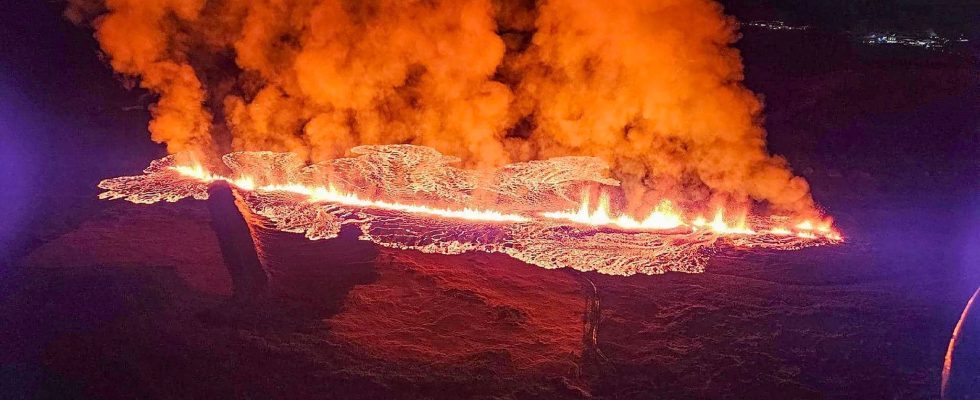A volcano erupted this Sunday, January 14 near the fishing port of Grindavik, in the southwest of Iceland, a town whose residents were urgently evacuated overnight. Seismic activity had previously accelerated sharply during the night, around 3 a.m., according to Icelandic public broadcasting.
The eruption began around 8 a.m. north of Grindavik, according to the Icelandic Meteorological Office (IMO), and surveillance images show large flows of bright orange lava along several fissures. This Sunday afternoon, two houses caught fire in the port of Grindavik, after being hit by lava.
Evacuations at night
“The city has already been successfully evacuated overnight and no lives are in danger but infrastructure could be threatened,” Icelandic President Guðni Th. Jóhannesson said in a message on X (formerly Twitter). Additionally, at midday, the Icelandic Meteorological Office (IMO) reported that “a new fissure has opened just outside the city limits of Grindavik.” The mayor, Fannar Jónasson, estimated that this created “a new situation” of risk but that “nothing could be done”.
Authorities are now closely monitoring the Svartsengi geothermal power plant, which provides electricity and water to around 30,000 residents in the region, and whose facilities are protected by a wall. “What matters is where the lava flows. It is now very important to monitor it,” explained Kristín Jónsdóttir, IMO volcanologist at RUV.
The authorities had issued an order on Saturday evening to evacuate the city by Monday due to the seismic activity and its impact on the already existing crevasses in the city, they had to accelerate the pace. This decision also follows the disappearance on Wednesday of a 51-year-old Icelander who was working to fill a crevice in a private garden when the ground suddenly gave way under his feet.
Strong seismic and volcanic activity
This is the fifth volcanic eruption in Iceland in almost three years, the previous one took place on the evening of December 18 in this same area, located about forty kilometers southwest of the capital Reykjavik, sign, for volcanologists, of a resumption of volcanic activity in the region.
Grindavik, a small town of 4,000 inhabitants, was evacuated on November 11 as a precaution after hundreds of earthquakes caused by the movement of magma under the earth’s crust – a precursor to a volcanic eruption.
Until the March 2021 eruption, the Reykjanes Peninsula, south of the capital Reykjavik, had been spared from eruptions for eight centuries. Thirty-three volcanic systems are considered active in this country of fire and ice, the most volcanic region in Europe.
